There are about 60 species of coffee plants in the world.
There are about 60 species of coffee in the world, of which only 25 species are cultivated to make coffee, of which only 4 species are used as commercial coffee: large fruit coffee (Coffea liberica), medium fruit coffee (Coffea canephora), small fruit coffee (Coffea arabica) and high yield coffee (Coffea dewevrei). These are botanical names.
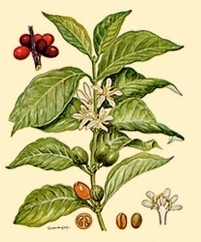
At present, coffee in the world is divided into four categories according to the varieties of beans: Arabica, Robusta, Liberica (from Liberia) and Esliaca (from Sudan). Among them, Arabica Arabica and Robusta Robusta have commercial value and are planted in large quantities, and they are also the main coffee beans traded in the international market, while the latter two kinds of beans are not common in the world.
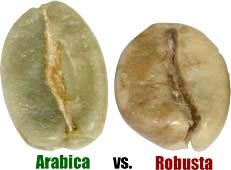
Arabica (Arabica) is the most traditional variety of coffee. Originally from East Africa, coffee was monopolized by the Arab world for a long time before the 15th century, so it was called "Arabian coffee" by Europeans. Recognized as the best variety, it was originally grown only in Cameroon and the plateau of Guinea, and was later introduced to Latin America and Asia.
It turns out that all the commercial coffee in the world is small fruit coffee, but it was only at the end of the 19th century that growers began to look for other disease-resistant varieties. At present, small fruit coffee is still the main variety of coffee, accounting for about 3% and 4% of the world's total coffee output. It is mainly grown in Latin American countries, but also partly in Indonesia and the Pacific islands. At present, the geographical and climatic conditions of Brazil, the largest coffee producer in the world, are very suitable for the growth of small fruit coffee, and the main varieties of coffee planted are also small fruit coffee. Brazil's coffee production accounts for more than 1% of the world's total output.
The fruit of small fruit coffee is smaller than that of medium fruit coffee and large fruit coffee. The berries are oval and generally have two seeds, the so-called "coffee beans". Xiaoguo coffee is suitable for the growth of volcanic geological soil with a growth temperature of about 20 ℃ and an altitude of 600m.
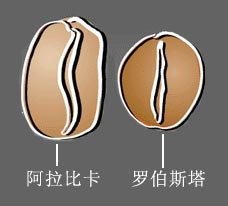
Medium fruit coffee: also known as Gaffra seed, origin in Central Africa. One of its variants, Coffea robusta, is the second largest variety of coffee produced in the world, accounting for about 20% of the world's coffee production. The berries of medium-fruit coffee are larger than small-fruit coffee but smaller than large-fruit coffee, and its disease resistance is strong. It is suitable for growing in a tropical climate with an altitude of 200-300 meters. It contains high caffeine concentration, which is about 2%, 4%, but its taste is sour and astringent. It is mainly grown in Indonesia, India, Uganda and other tropical countries. Its disease tolerance and fruit yield are higher, and it can be cultivated in hot and humid areas where small fruit coffee can not survive. It is mainly used in large-scale coffee industry to produce instant coffee and as a comprehensive coffee.
Big fruit coffee: also known as Liberian coffee, origin is Liberia, mainly in Africa Liberia, C ô te d'Ivoire, Madagascar cultivation, very patient, but poor quality. Pest-resistant, suitable for high-temperature and humid climate varieties, their berries and seeds are nearly twice as large as small fruit coffee, rich flavor, but light flavor, generally Nordic people prefer this kind of coffee.
Important Notice :
前街咖啡 FrontStreet Coffee has moved to new addredd:
FrontStreet Coffee Address: 315,Donghua East Road,GuangZhou
Tel:020 38364473
- Prev
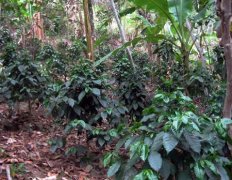
Production of coffee beans Coffee trees from planting to fruiting
Coffee trees take 3-5 years from planting to fruiting. 6-10 years of coffee trees are the most likely to bear fruit, about 15-20 years, is the harvest period. Coffee trees are usually bred in nurseries and grow into saplings, and then moved to coffee farms a year later, in full compliance with the way the Arabs planted and cultivated coffee trees. Coffee trees will continue to take root downward and upward in the first four or five years of their growth.
- Next
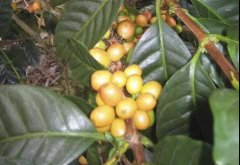
Coffee variety: Pacama (Pacamara)
Pacamara coffee is a hybrid of Pacas Pacas (a sudden variant of the bourbon species) and giant bean Maragogype (a sudden variant of the Tibica species found in Brazil) found in El Salvador in the 1950s. The coffee tree is very tall, the branch spacing of the trunk is wider than that of Pacas Pacas, and the edge of dark green leaves is wavy. It is suitable for cultivation at the elevation of 900m to 1500m.
Related
- Guji coffee producing area of Guji, Ethiopia: Humbela, Shakiso, Wulaga
- What is the most expensive variety of Qiloso in BOP multi-variety group?
- How to store the coffee beans bought home?
- Why are Yemeni coffee beans so rare now?
- Ethiopian Sidamo all Red Fruit Sun Sun Santa Vini Coffee beans
- SOE is mostly sour? What does it mean? Is it a single bean? what's the difference between it and Italian blending?
- Is Italian coffee beans suitable for making hand-brewed coffee?
- How to choose coffee beans when making cold coffee? What kind of coffee beans are suitable for making cold coffee?
- Just entered the pit to make coffee, what kind of coffee beans should be chosen?
- Can only Japan buy real Blue Mountain Coffee? What are authentic Jamaican Blue Mountain coffee beans?

